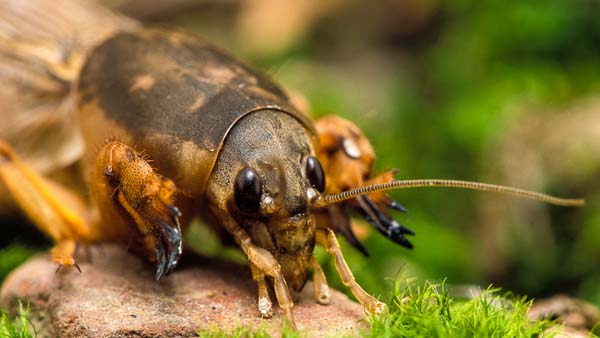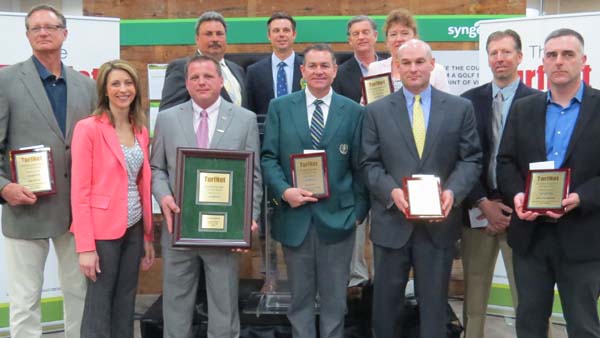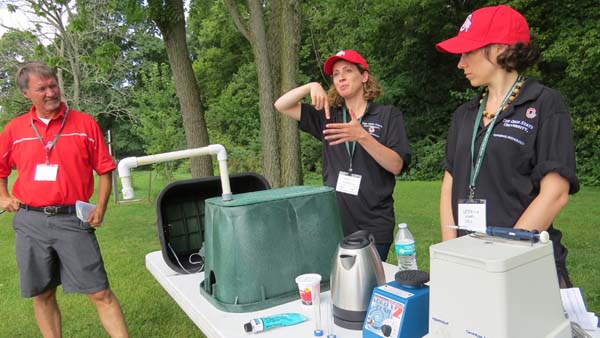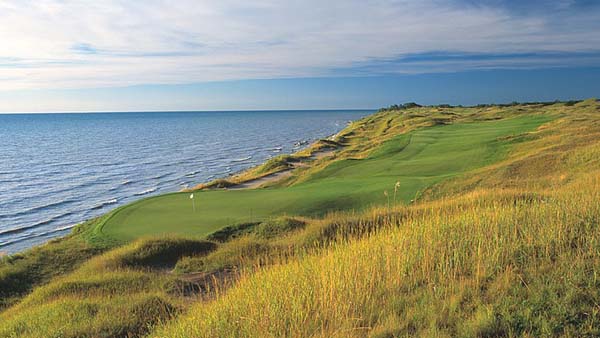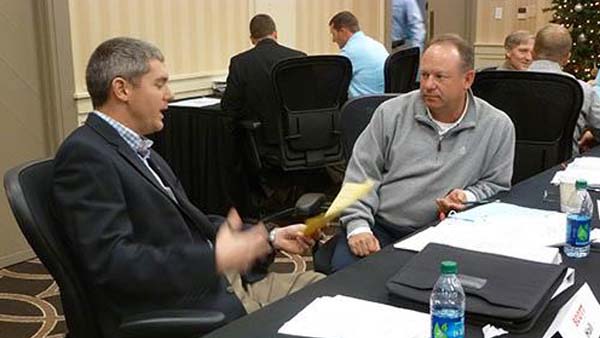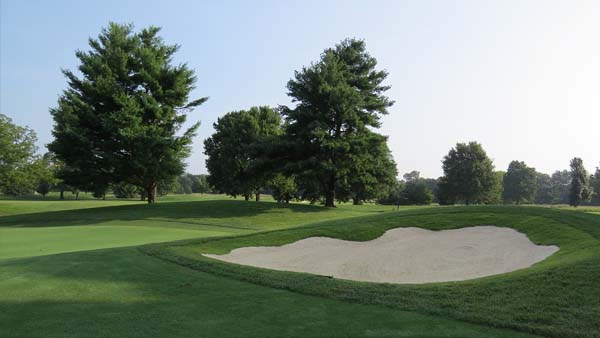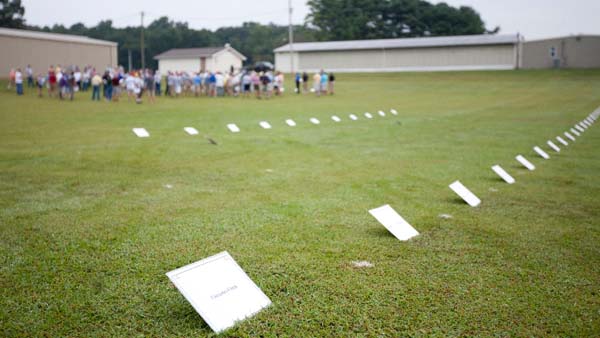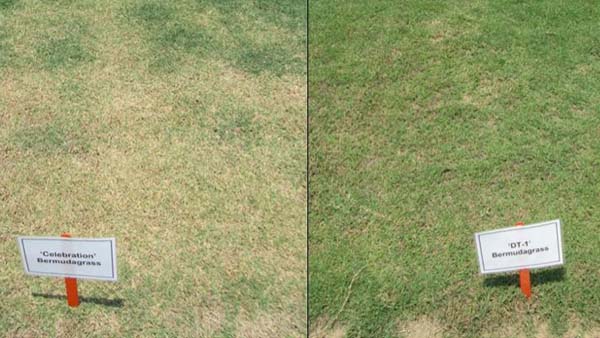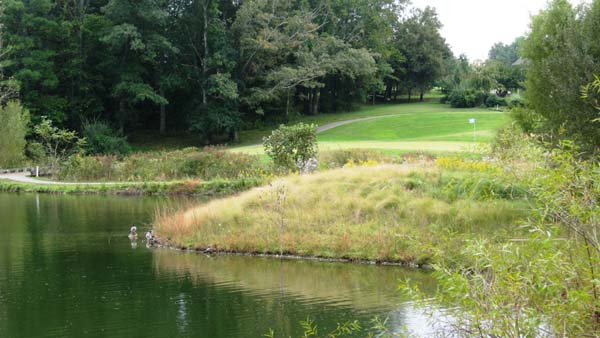
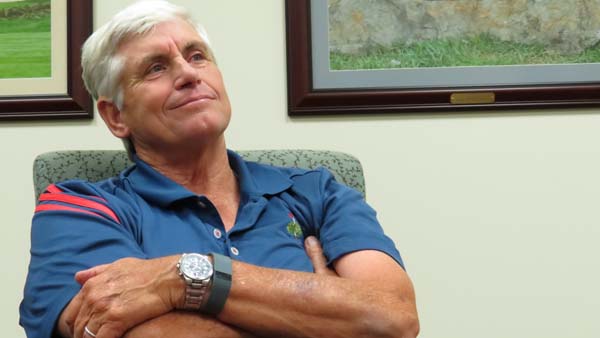
"I've always been a task-oriented guy," Shaffer said. "As my dad said: 'Give that boy a round peg and he'll pound it right through a square hole.' " That intensity and focus have been important attributes for Shaffer, who has spent the past 13 seasons of a 40-plus-year career as director of golf course operations at Merion Golf Club in Ardmore, Pennsylvania. The East Course at Merion, a 1912 Hugh Wilson design, is No. 8 on Golfweek's list of the top 100 classic-era courses, and success there requires more than doing things the way they've always been done in the past. It means embracing technology, cutting edge thinking and a new way of doing things, things that might seem like unnecessary risks at other courses. It means being an industry leader in managing turf and personnel. "He's not afraid to take chances," said Jamie Kapes, who worked at Merion from 2001 to 2007, when he left the nest to become property manager at Woodway Country Club in Darien, Connecticut. "He's calculating, and he's outspoken. "He's never about doing what is easy. He's all about doing what is right." Shaffer is indeed a walking contradiction. A 1974 Penn State graduate, he has earned a reputation as an early adopter and an outside-the-box thinker, traits he still embraces at age 62. To his credit, not only is he shaking up the way golf courses can be managed, but he's doing it at a place that is highly visible; a place where his successes -- and failures -- are on display for all to see. That takes guts at a place where the great Bobby Jones twice won the U.S. Amateur (1916, '30). "Yes, Matt certainly thinks outside the box," said longtime friend John Zimmers, superintendent at Oakmont Country Club and Shaffer's right hand during the 2013 U.S. Open. "I myself follow more of the straight road. Matt loves to experiment and try many new things. I think he has a little researcher in him along with engineer. "He is always trying to improve something to make the course better." The most recent cause du jour at Merion is changing how turf is managed through a program that includes reducing spray applications and watering less often. While going the better part of a year between spray apps might sound like a one-way ticket to the unemployment office to some, it works for Shaffer and it works for Merion. He says sound agronomics are key to learning how far he can extend those windows. "It's been a 198 days between sprays on our greens, and 212 days on fairways," Shaffer said. "It's all about understanding the plant. "My initiative now is to figure out how to grow grass, not spray grass, water less and truly be sustainable." Convincing others to push the limits at their respective courses can be difficult. "Superintendents have no job security. To ask them to do something that is risky is in itself risky for them, because they can be fired if it doesn't work," he said. "My wife says it's like being married to a football coach, except we don't make as much money. In coaching, if you win you keep your job. If you lose, they pull up the slack on the trigger so fast, you're dead before you hit the ground. So, it's hard for superintendents to take risks. I'm getting close to retirement, so I'm going to take them. I work for a club that has a high profile and feels like they should be on the leading edge. If we can do risky things here, that should be leverage for any other club to do it, so kudos to the members her for that." His revolutionary style extends beyond turf to include being an intense people manager, who drives employees to give their all and be their best while they are on the golf course, and to forget about work when they're off it. Woodway's Kapes, who called Shaffer's management style a form of tough love, credits his former boss for giving him the tools necessary to succeed at the next level. "Working for him was hard. This is an in-your-face industry, and he treats you the way members are going to treat you," Kapes said. "There is no polish on his message, and I don't think a lot of people come in expecting that teaching method. He's that way because he wants you to be prepared. He cares about his employees. He is fair and genuine." Another former employee recalls a time when that intensity was ramped up even for Shaffer. "Matt's an intense guy. One time he started coming into work like a raging bull and we all wondered what he was always yelling at," said Scott Bordner, a Shaffer protégé who has been superintendent at Chicago Golf Club since 2009. "We found out his wife had bought him an espresso machine. We learned that if you needed anything from him you had to wait until 10 or 11 o'clock when the caffeine wore off and he was rational again." Caffeine rushes aside, Shaffer even promotes himself as a superintendent on the edge. It's a reputation that is only partly true. He's also a superintendent who cares about his workers and wants them to have a life off the golf course. "A lot of my peers thought I was crazy for working for him," Kapes said. "They said 'He's crazy. I hear he makes you work 20 hours a day.' If you're willing to put the time in and care about the golf course, there is no one better to work for than Matt Shaffer. "There are a lot of superintendents who might go three or four months before they give their assistants a weekend off, but Matt always made sure you had every other weekend off. When you were there, you worked, but if it was your weekend to be off, he wanted you outta there at 3 o'clock on Friday, and he didn't want to see you until Monday morning. I do that here (at Woodway) with my crew." Shaffer's reputation as a mad scientist came to the forefront during preparations for the 2013 U.S. Open at Merion, which many believed was too short for a major championship. "When we got the Open, I got really nervous," Shaffer said. "(Professional golfers) are so gifted. It doesn't seem real how good they are. I thought 'we're only 6,950 (yards). They'll straighten us right out.' " The only straightening out was the lesson Shaffer and his crew imparted upon the world's best players. With pundits predicting a winning score of 10 under par or lower, Justin Rose needed an even par 70 on Sunday to win at 1 over par despite 6 inches of rain in four days that saturated and softened the course the week before the tournament. Only six players in the field were under par on the tournament's final day. Making a short course difficult was a challenge. Shaffer sought new grasses that when planted strategically changed the way the East Course played. "I got creative. I got really creative," he said. "I spent months looking for the worst grasses to play out of, then I found those grasses and planted them in the landing zones and in the rough. I planted some of them together in different combinations in the same area, so if you landed in a 4-foot square four days in a row you could have four different lies." Given Merion's length, Shaffer said he thought it was his responsibility to prove the USGA didn't make a mistake in choosing the 1912 Hugh Wilson design for its national championship. He experimented with mixing concrete into topdressing sand, but that made the greens too hard. He finally settled on an ultra fine sand, and proceeded to work that into the greens for three years, making them hard as bricks and a fair but tough challenge for the Open field. "I thought 6 under would win it," Shaffer said. "I figured if it was 6 under or less, the Open would come back some day. If it was 10 under or more, they're never coming back here. That's what I cared about. I want the members' kids to have an Open here some day, so I figured it was my responsibility to cave (tour) golfers' heads in. "To this day, I still can't believe plus-1 won here. I'm thankful I don't have to replicate that performance. I'm pretty sure I couldn't top that effort." That preparation did little to ease the tension that comes with hosting a major. "I probably slept seven hours in 10 days," he said. "I thought the rain hurt us, but the course dried out every day and got progressively more difficult. Then oddly enough the wind came out of the east for the championship. It always comes out of the west, but when it comes from the east it makes the course play much harder. I'm positive God was looking over my shoulder for that even, which was a good time for him to show up." Shaffer calls himself a superintendent who was "stuck" in his career until Paul R. Latshaw hired him in 1986 to be the assistant superintendent at Augusta National Golf Club. It was under Latshaw's tutelage that Shaffer learned championship golf. Ever since, he has made himself available to colleagues and competitors alike to help them achieve a similar goal. "He always left his door open for anyone," Bordner said. "He has a lot of young guys who look up to him. He's like a father figure to a lot of us who were working there and were far from home. Merion was like our family, and like a parent, he let us go out and experience things -- without letting us do anything too stupid. "If someone calls him for advice, it doesn't matter if it's another elite private club or a nine-hole municipal course, he'll talk to them for an hour if they need to." Kapes said that willingness to share information is another Shaffer trait he tries to copy, sometimes not as successfully as his former boss. "Two of my former superintendents have gone on to become superintendents, and when they call me sometimes I might not get to them within 24 hours," Kapes said. "That makes me feel awful, because Matt always gets back to me within an hour." That willingness to share the experiences of a career that has spanned more than 40 years is something Shaffer says he learned growing up on the family farm in Martinsburg, Pennsylvania. There, he said, his parents gave him the gifts of a work ethic, the ability to forgive and the communications skills necessary to share his good fortune with others. "He was always asking for opinions, too," Bordner said. "He never thought he had the answer to everything." It just seems like he does.
- Read more...
- 9,257 views

